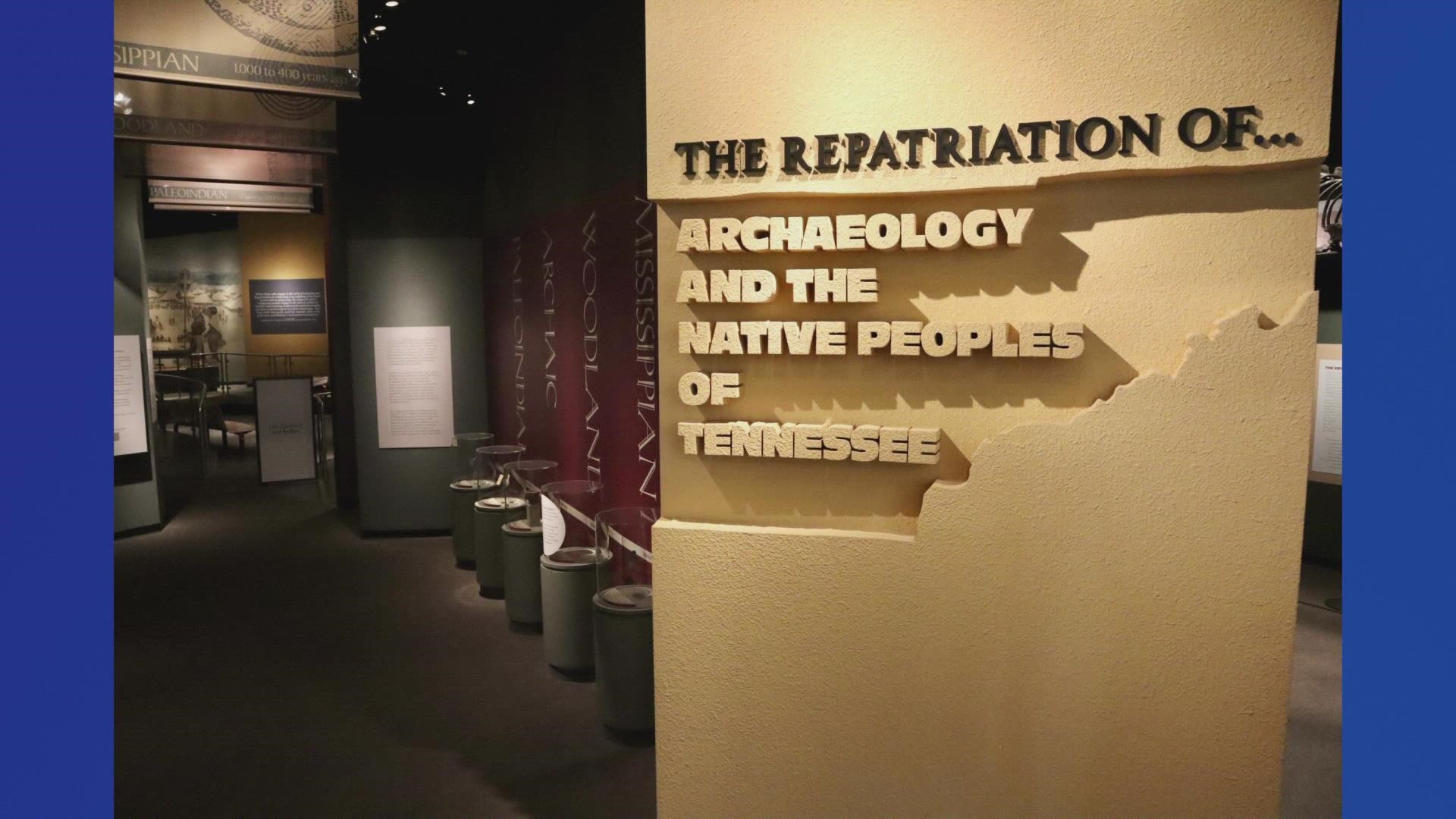KNOXVILLE, Tenn. — The McClung Museum of Natural History and Culture said it is opening a new exhibition explaining the Repatriation, or return, of Native American ancestral remains and cultural items back to their proper cultural communities on Aug. 23.
The exhibition is sponsored by the Tennessee Valley Authority and produced in collaboration with Chickasaw Nation, Choctaw Nation of Oklahoma, Eastern Band of the Cherokee Indians and the University of Tennessee Office of Repatriation, according to a release from the museum.
The museum said the exhibition examines the legal and ethical principles of the Native American Graves Protection and Repatriation Act (NAGPRA), which Congress passed into federal law in 1990, mandating all institutions receiving federal funding provide federally recognized tribes with a list of Native American ancestral remains, burial, sacred and other culturally significant items for possible repatriation.
The exhibition reimagines the museum's 22-year-old Native Peoples of Tennessee gallery "to highlight the role of Repatriation in preserving and commemorating Indigenous cultures," according to a release.
The museum said the transformation comes from its desire "to be transparent with the public and to strengthen relationships with Native Nations."
“The McClung Museum sees this as a starting point to building lasting, respectful relationships with important Native Nation partners,” said Claudio Gómez, executive director of the McClung Museum. “These relationships will help open the door to more collaborative efforts with Native communities in research, programming, cultural and environmental preservation, and exhibitions.”
Officials said the gallery walls feature interpretive panels and quotes from Native representatives and scholars explaining the NAGPRA process and the importance of the law "as an expression of sovereignty and human rights for Native communities in the United States."
The museum said many items previously on display were removed as a part of the Repatriation process or out of respect following conversations with its Native Nations partners.
“This exhibition is a window into the complexities and healing that can occur when institutions work through NAGPRA and create true partnerships with Native Nations,” said Dakota Brown, the director of education at the Museum of the Cherokee Indian in Cherokee, North Carolina. “These objects are direct connections to our ancestors who created them, held them, and buried loved ones with them; the impact of bringing them home is why so many Native activists fought and continue to advocate for NAGPRA legislation. Partnerships like those the McClung Museum is cultivating with Native Nations, including the Eastern Band of Cherokee Indians, have the potential to bridge the gap in understandings of our culture and community.”
The museum said it will present a series of public programs about Repatriation throughout the upcoming school year. More information is available on its website.

